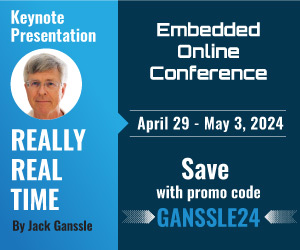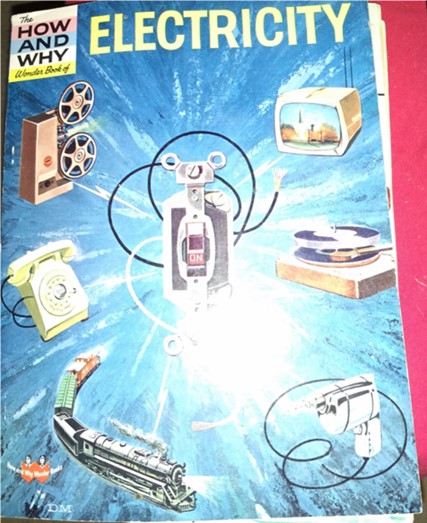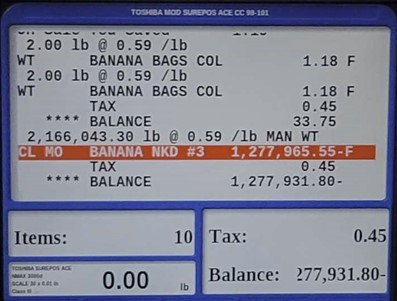| |||||||||||
|
You may redistribute this newsletter for non-commercial purposes. For commercial use contact jack@ganssle.com. To subscribe or unsubscribe go here or drop Jack an email. |
|||||||||||
| Contents | |||||||||||
| Editor's Notes | |||||||||||
|
Tip for sending me email: My email filters are super aggressive and I no longer look at the spam mailbox. If you include the phrase "embedded" in the subject line your email will wend its weighty way to me. |
|||||||||||
| Quotes and Thoughts | |||||||||||
|
Again and again and again - what are the facts? Shun wishful thinking, ignore divine revelation, forget what "the stars foretell," avoid opinion, care not what the neighbors think, never mind the unguessable "verdict of history" - what are the facts, and to how many decimal places? You pilot always into an unknown future; facts are your single clue. Get the facts! - Robert Heinlein |
|||||||||||
| Tools and Tips | |||||||||||
|
Please submit clever ideas or thoughts about tools, techniques and resources you love or hate. Here are the tool reviews submitted in the past. Here's an interesting article on memory safety in Rust. A payrolled NYTimes article describes how a furniture company banned smartphones... and saw a 20% productivity increase. Though sparse on details it does make you think. |
|||||||||||
| Apollo Computers | |||||||||||
|
I can still remember watching our grainy black and white TV when Alan Shepard launched in 1961. I was probably in first grade, but we were allowed to skip school that day to see the flight, since Dad was working at Grumman on LEM (now called LM) proposal work. The launch was postponed a couple of times and days, and I have no memory if we stayed home on those occasions as well. That was just over 50 years ago. Younger folks would be stunned how space fever grabbed this nation. From about 1961 to 1970 it practically defined popular culture: space burgers, space motels, space everything was the order of the time. The interest quickly waned. I remember watching Apollo 17 go; the launch was shown as a small inset on a broadcast of a (apparently more important) football game. Computers were still in their infancy in 1961. The Mercury spacecraft didn't have one, which to a 2013 EE is pretty astonishing considering we need computers even to drive toothbrushes today (http://www.beamtoothbrush.com/). IBM's 360 series was still years away; even their 7090 family was only a year old. A decade later when I started college the university was dismantling their 7094 as it was completely obsolete. By the time of Apollo computers were more sophisticated, but by today's standards were primitive. The history of these times has been told in many books. One of my favorites is Digital Apollo (http://www.embedded.com/electronics-blogs/break-points/4026895/Engineering-Apollo). But recently I ran across an old book called "Computers in Spaceflight." It's a 300+ page tome (not including references) which is available here (http://archive.org/download/nasa_techdoc_19880069935/19880069935.pdf) as a huge (500 MB) .PDF. James Tomayko wrote it under a NASA contract. The book does have a number of obvious errors, and my first reaction was that Mr. Tomayko must have been more English Major than computer scientist, but Google indicates he was a professor of Computer Science at Carnegie Mellon till his untimely death in 2006. For instance, the cycle time of the Gemini computer is listed as 140 msec which seems incredibly slow; on-line references suggest that should be 140 usec. But the mistakes do not diminish this important book. It's divided into three sections, covering manned and unmanned missions and ground support equipment. The former takes us to about 1986 and the Shuttle, though Challenger's loss that year isn't mentioned. Obviously, this long predates the International Space Station. The story of the Apollo Guidance Computer has been told many times and continues to fascinate, but till reading Computers in Spaceflight I had little information about Mercury's lack of a processor, or about the very limited CPU aboard the Gemini missions. It used no ICs and was composed entirely of discrete devices, presumably transistors, though the book is silent about this. At almost 60 pounds it was composed of 510 PCBs just for the logic section. A bit-serial machine, it had 4k 39 bit words of core memory. An auxiliary tape unit weighed in at another 26 pounds and stored just over a million bits. Compare that to a modern sub-$100 disk drive that stores ten million times more data in a package measured in grams of weight. Unmanned programs started using microprocessors with the 1802, one of the first CMOS CPUs which used practically no power and had no hardware stack. The book makes tantalizing references to AMD's 2901 (a bit-slice CPU the author gets wrong) and the 68K, but hardware gets much less focus than software. To me, that's Computers in Spaceflight's biggest disappointment as the digital hardware of the time had to be ingeniously designed to overcome the limitations of low-transistor counts. The software gets lots of attention, sometimes in mind-numbing detail. But the meta-story is fascinating. As far back as Gemini program managers found that the software was the pacing component. It was never done fast enough and many meetings and committees tried, without much luck, to constrain the code. The section on ground computers is less compelling than the others, as these were off-the-shelf mainframes. One interesting tidbit: the Saturn V firing rooms at the Cape required 250 men stationed behind consoles to get the thing off the pad. A floor layout shows that, indeed, these individuals were men: there's a sizable men's room, but no ladies! For a computer history buff this is a must-read, though be prepared for some slow sections. A Kindle edition is available for a buck, which is a much better deal than printing so many pages. No doubt I made a generous donation to HP's ink division. Do you remember the Apollo program? How about Mercury or Gemini? |
|||||||||||
| Even More on Are Engineers Born or Made | |||||||||||
|
Are we born or made? Readers have lots of interesting opinions, responding to articles in Muse 481 and 482. Vlad Z, who started this discussion, added:
Wouter van Ooijen warns against killing an interest:
Anne Adamczyk has a slightly different take:
Roy Tellason sent a pic of one of his early favorite books:
Eric Brewer figured if a little voltage would work, well...
|
|||||||||||
| Branchless Programming and Testing | |||||||||||
|
Louis Bertrand's take on Branchless programming:
Geoffrey commented on AI and test:
Geoffrey's comments are augmented by a recent article about this. |
|||||||||||
| Failure of the Week | |||||||||||
Deepak Agarwal sent this little jewel: Yes we have negative bananas. David Ryan sent this: Have you submitted a Failure of the Week? I'm getting a ton of these and yours was added to the queue. |
|||||||||||
| Jobs! | |||||||||||
|
Let me know if you’re hiring embedded engineers. No recruiters please, and I reserve the right to edit ads to fit the format and intent of this newsletter. Please keep it to 100 words. There is no charge for a job ad.
|
|||||||||||
| Joke For The Week | |||||||||||
These jokes are archived here. Walter Turchyn sent this: Each year just before Christmas, I've had this habit of writing up a component-related song, based on the tune of some well-known Christmas carol or other seasonal song. Here is this year's edition, which I have shared with my internal " customers" at Parker Hannifin: "My Favourite Parts" Bright shiny LEDs, thin-film resistors, |
|||||||||||
| About The Embedded Muse | |||||||||||
|
The Embedded Muse is Jack Ganssle's newsletter. Send complaints, comments, and contributions to me at jack@ganssle.com. The Embedded Muse is supported by The Ganssle Group, whose mission is to help embedded folks get better products to market faster. |







